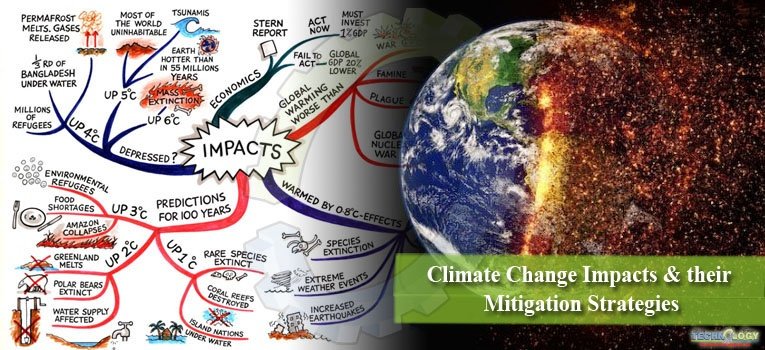Agriculture is an important sector of the Pakistan economy. The crops, livestock, and fisheries produced in Pakistan contribute more than 2284561 PKR Million to the economy each year but now effected badly by the impact of climate change.

Agriculture and fisheries are highly dependent on the climatic conditions. Increases in temperature and carbon dioxide (CO2) can rise some crop yields in some places. But to realize these benefits, soil moisture, nutrient levels water availability, and other conditions also be changes in the frequency and severity of floods and droughts could pose challenges for farmers and suppliers and threaten food safety.
Meanwhile, warmer water temperatures are likely to cause the habitat choices of many fish to shift, which could disrupt ecosystems. Overall, climate change could make it harder to cultivate crops, rear animals, and catch fish by same methods and same locations as we have done in the past. The effects of climate change also need to be well-thought-out along with other evolving factors that affect agricultural production, such as changes in farming practices and technology.
Impacts on Crops
Crops grown in the Pakistan are critical for the food supply here and around the world. Changes in temperature, atmospheric carbon dioxide (CO2), and the frequency and intensity of risky weather could have significant impacts on crop yields.
- Higher carbon dioxide levels can affect crop yields. Some laboratory tests suggest that elevated CO2levels can increase plant growth. However, other factors, such as changing temperatures, nutrient constraints and water, may counteract these potential increases in yield.
- For example, if temperature exceeds a crop’s optimal level, if enough nutrients and water are not available, yield increases may be reduced or reversed. Elevated carbon dioxide (CO2) has been associated with reduced protein and nitrogen content in alfalfa and soybean plants, resulting in a loss of quality. Reduced grain and forage quality can reduce the ability of pasture and rangeland to support grazing livestock.
Climate Change Impact on Humans
- Certain gatherings have higher vulnerability to atmosphere delicate wellbeing impacts attributable to their age (kids and elderly), sexual orientation (especially pregnant ladies), social minimization (related in a few territories with indigenous populaces, destitution or relocation status), or other wellbeing conditions like HIV. The financial expenses of medical issues caused by environmental change are significant.
- Numerous irresistible maladies, including water-borne ones, are profoundly touchy to atmosphere conditions. Figure 1 outlines the relationship among temperature and looseness of the bowels. A fundamental worry in both created and creating nations was the expansion in and expanded geological spread of diarrhoeal maladies, the report found.
Adaptation Solutions
- The Climate Adaptation Management and Innovation Initiative of the Word Food Program creates atmosphere actuated sustenance instability examinations and practices to illuminate programming and basic leadership. The activity centres on 16 nations crosswise over Asia, the Middle East, and Eastern, Central and Northern Africa.
- In France, the Tiger Mosquito Surveillance Network screens the tiger mosquito’s developments. The Smart Health Facilities Initiative and Smart Hospitals Toolkit is being executed through the Pan American Health Organization in the Caribbean with the point of supporting the legislatures of the chose nations to evaluate and organize weakness decrease interests in their wellbeing offices.
- A few nations incorporate wellbeing into their national adjustment designs (NAPs) and projects. For instance, Macedonia and six extra nations are a piece of an activity of WHO and the German Federal Ministry for the Environment, Nature Conservation, Building and Nuclear Safety that brings wellbeing into adjustment designs.
- There are additionally various preparing and mindfulness raising exercises, including the Self-Learning Course on Climate Change and Health, created by Mexico’s National Institute of Public Health in accordance with the joint Pan American Health Organization/WHO Strategy and Plan for Action on Climate Change. The preparation goes for bringing issues to light and enhancing learning on the wellbeing impacts of environmental change among the overall population and different divisions.
Impacts on Livestock
- Heat waves, which are projected to increase under climate change, could directly threaten livestock. In 2011, exposure to high temperature events caused heat-related losses to agricultural producers. Heat stress affects animals both directly and indirectly. Over time, heat stress can increase vulnerability to disease, reduce fertility, and reduce milk production.
- Drought may threaten pasture and feed supplies. Drought decreases the amount of quality forage available to grazing livestock. Some areas could experience longer, more intense droughts, resulting from higher summer temperatures and less precipitation. For animals that rely on grain, changes in crop production due to drought could also become a problem.
Conclusion
- Climate impacts both crops and livestock which ultimate impact agriculture output.
- Due to climate impact low yields reduce food supply to the populated world.
Ahmed Mukhtar, Talha Javed and Rubab Shabbir
Seed Physiology Lab, Department of Agronomy, University of Agriculture, Faisalabad
Corresponding author: talhajaved54321@gmail.com